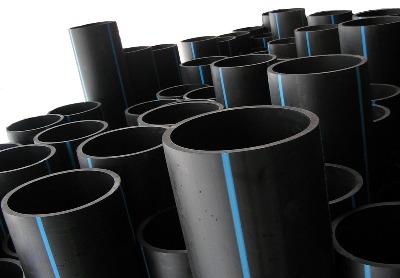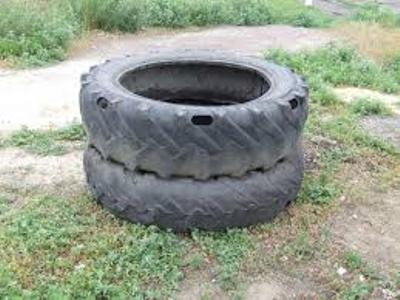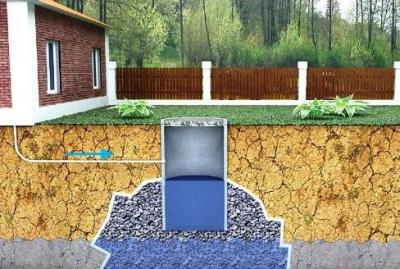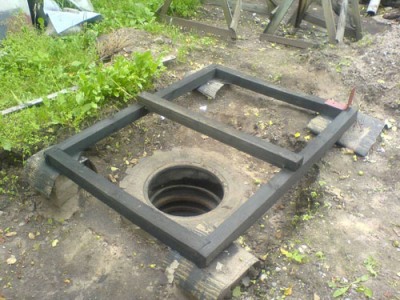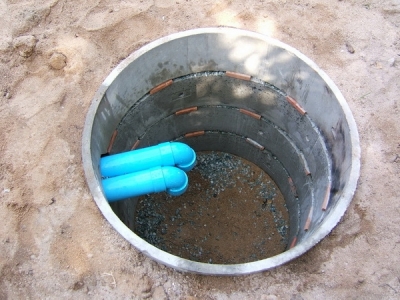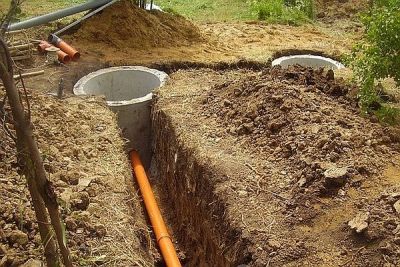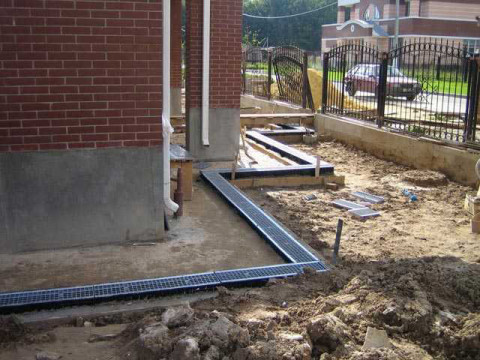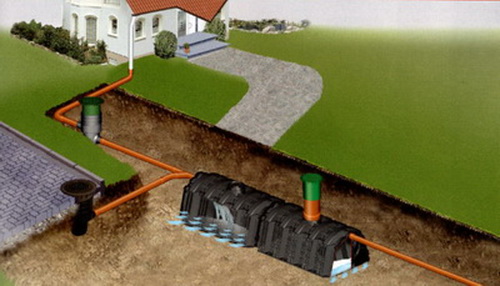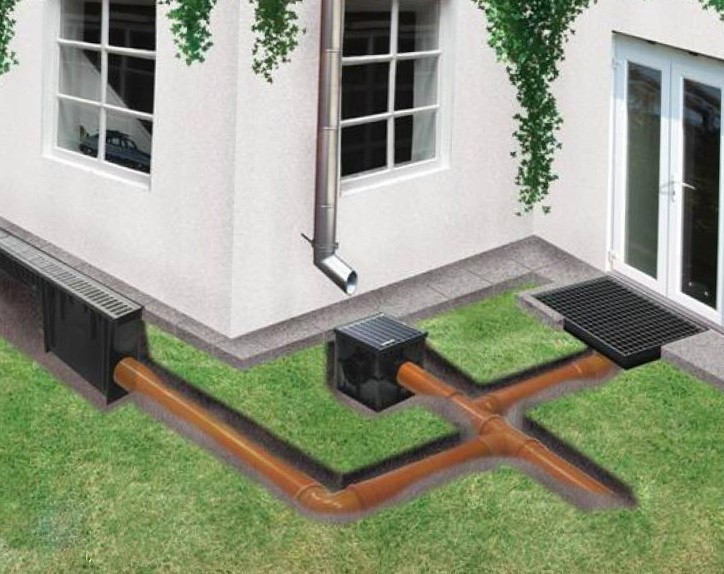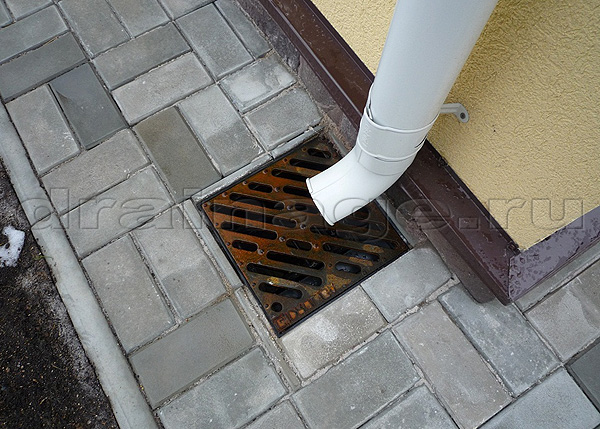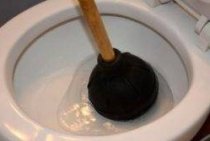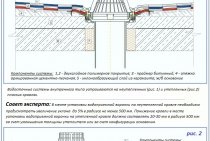What can become a drainage substrate
- for clay soils, the best results are obtained by mixing the arable layer with coarse river sand;
- for loams, a mixture of river sand with peat can be recommended. When adding peat, be sure to stock up on litmus paper or a device that allows you to measure the acidity of the soil.
The addition of this substrate tends to increase it. If this is the case, please let me know a little.
Good substrates to increase the drainage properties of the arable layer:
- moss;
- expanded clay;
- small brick fragments;
- shell dust.
From organic materials, various cut and chopped branches of trees can be used (at the same time, after a while, this will increase soil fertility).
The other extreme is sandy soils. For them, the introduction of dry granular clay is shown, which, when soaked, combines with sand and forms the correct, in terms of mechanical composition, well-drained soil.
It is recommended to introduce substrates that affect moisture capacity from autumn. But if such work was not carried out when cleaning the garden, it is worth doing it in the spring. It is desirable that the beds stand for at least a couple of weeks after drainage work. The soil should "rest" before spring sowing garden crops.
Another important point in the water exchange of the arable layer is to make sure that the irrigation liquid reaches the roots, and does not evaporate from the soil surface. This requires regular loosening of the beds, which helps to break the crust (destroy the capillaries formed in it), often formed on the surface. Mulching also gives a good result. As soon as the plants planted in the beds reach the second or third true leaf (or as soon as you plant the seedlings in a permanent place and get sure that they have taken root), it makes sense to mulch the plantings.
As a mulching material successfully used:
- sawdust of deciduous trees, shavings;
- expanded clay, etc.
- organic materials (hay, straw, leaf litter).
But the dark plastic film recommended in many sources should be used only if there are roots of perennial weeds in the soil. The earth covered with a dark film experiences a negative effect, as a result of which the roots of the garden crop may begin to rot. If, however, holes are made sufficient for the exit of the aerial part of the shoots, then moisture will evaporate through these holes and weeds will begin to germinate. What then is the point in such mulching ?!
Regularly mulching your garden beds with organic materials will save you from constant watering, reduce weed growth, and save time for your loved one(s).
Have a good harvest!
Closed drainage algorithm for clay soils
1. The first stage in the construction of a closed drainage system is the determination of the location of the water intake, which can be a natural reservoir or a ditch along the road.
How to solve the problem of lack of a natural water intake? There are several ways to solve the problem of outflow of water:
- the device of an artificial reservoir, for example, a pond in the country or a swamp;
- the device of deep ditches outside the site (of course, not to the detriment of the neighbors);
- arrangement of vertical shallow wells with subsequent automatic pumping of water using pumps.
2. Along the perimeter of the site, break through trenches with a depth of 1 - 1.2 m and a width of 35 - 40 cm to collect water under the pipes, bringing them to the water intake. Let's call them "Main Channels". It is advisable to lay pipes with a diameter of 110 mm in the main channels. The main pipe is laid a little deeper than the collecting pipes of the drainage. According to regulatory documents, the drainage system is located no closer than 0.5 m from the fence and 1 m from the blind area of the house.
3.Water enters the main canals through drainage trenches. Dig a network of trenches 0.8–1.2 m deep and 30–35 cm wide for collecting drainage pipes on the site. The device of the trench network provides for the laying of small channels at a slope of at least 3-5 cm per linear meter. Thus, a normal flow is ensured, with a smaller slope, the flow rate decreases and stagnation of water in the area may be observed. The distance between drains in areas with heavy clay soils is approximately 7-10 m.
4. When the entire network of trenches has been dug, you need to leave it open and test it. Ideally, heavy rain is suitable for this, but if this is not expected in the near future, you need to shed the channels well, see how and at what speed the water flows and whether it stagnates. If necessary, problems must be eliminated, namely, to increase the flow rate - increase the slope or diameter of the pipes, in case of stagnant water - increase the density of the branching of the network of drainage channels.
5. After such a check, the pipes can be safely closed. To do this, line the dug channels with geotextiles that pass water well, such as interlining. On heavy clay and loamy soils, special volumetric drainage filters are especially effective, which not only protect the pipe from silting, but also improve water flow. Such filters are made from porous organic materials - rye straw, coconut fiber or fibrous peat.
6. Lay the prefabricated pipes, leading them to the main channels. The most commonly used plastic corrugated and perforated pipes with a diameter of 63 mm.
7. Drainage pipes are connected to each other with special tees - fittings or crosses, wrapping them in geotextiles to prevent solid particles from entering the pipes.
8. Wrap the free ends of the pipes in several layers of geotextile, tightly fixing them with wire. Through the free ends of the pipes, excess water enters the drainage system.
9. Fill the pipes with loose material that passes water well. Experts advise using crushed stone, expanded clay, small stones, sand for this. But I would advise using only coarse-grained sand, since it not only passes water well, but also does not clog the site during repair work. The backfill layer on the side and top is at least 15 cm.
10. The resulting sandwich of geotextile, pipe and sand is overlapped with the free edges of the geotextile and again covered with coarse sand.
Natalia Vysotskaya, landscape designer, Ph.D. -X. Sciences
2013 – 2014, Planting a Garden. All rights reserved.
How to make a drain hole
For effective reception of wastewater and treatment, you need to determine the depth of the pit, and for this you need information about the soils of the site. To use the pit in winter, its depth must be greater than the GPG (freezing depth of the soil). These data are reference data for climatic regions, and are available in the NTD, and can be obtained from neighbors. The drainage capacity of the soil layers that make up the base of the site are also important. If it is sandy soil, sandy loam, loam with the inclusion of clastic soils and stone, good drainage and low heaving of the soil are provided. But dense clay in the layers under the site will create a problem: the clay saturated with water swells and creates an aquiclude, and when dried, it greatly decreases in volume. All this leads to soil movements, severe frost heaving and low drainage properties, and for wells and pipes - these are deformations, pushing out of the ground and breakage. For the installation of pipelines and the foundations of buildings of all types, clay soils are one of the most difficult.
Thus, a drainage drain hole in clay is a deliberate loss. If the pit itself is arranged in a drainage area, but the passages of pipes to the pit and outlet filtration pipes have to be made in soils with layers of clay, then the trench is arranged with a high drainage layer of crushed stone, gravel and sand. The bottom layer - sandy - serves as a damper during soil movements, and a separating membrane layer is also required to protect pipes.
The second important condition is low GWL (groundwater level). The minimum distance from the bottom of the drainage pit to a stable aquifer (this data varies by season and depends on many factors) is one meter
If the underground water runs high, then the drainage capacity of the pit will be negligible, and instead of cleaning and capillary filtration into the ground, the pit will rot and poison the water and earth. It is clear that on clay and at high GW such a hole does not make sense. In many cases, a septic tank, an aeration tank or a dry closet are installed to clean black water, and gray water is diverted to a two-chamber drainage system, and then to a filtration field. As an option, they install a sealed cesspool and use the services of sewage equipment. Unfortunately, such a service without hassle is not available in all areas of our vast country.

With a low GWL and good drainage qualities of the site soils, a drain pit can be made from barrels, bricks, concrete rings or used tires.

Drainage pit made of concrete rings
Perforated concrete rings can be erected in one day by placing them in the excavation and then placing a drainage backfill. This option is quite expensive, but special equipment is needed for mounting the rings. For bath drains, a concrete pit is perfect, but for public sewerage, bottom sealing, deepening of the well and additional wastewater treatment systems are required. Calculations are also required with an assessment of the characteristics of the soil layers and their absorption, as well as the level of the aquifer by season.

Drainage pit made of bricks
The walls of the drain pit can be made with brickwork in the gap, half a brick thick. Masonry is done with dressing and gaps of 30-40 mm in each row. Drainage layers - from large rubble, gravel, brick battle. The task of drainage is to purify water and evenly distribute it in the pit, and free-flow drainage into the soil. A brick pit, even one built with used bricks from disassembly and halves, will be much more durable than a corroded iron barrel and will be able to filter more drains. The option with a sealed bottom and brick walls is also suitable as a deep cleanable cesspool for black drains from the toilet.

How is this process carried out?
As for the sewerage system of a private house, here the provision is due to the fact that there are the simplest materials. To organize a drainage system for a private house of the simplest type, you need:
2. Material in order to arrange the capacity of the pit (in this regard, you can use brick, concrete rings, large tires).
As for the capacity of the septic tank, a lot depends on the biological treatment of wastewater. In the event that the soil is not loam, but the level of groundwater, the depth of which is 2.5 m. As for the septic tank, it is a well, which is a guarantee that to some extent cleans wastewater.
After the first stage of construction of the sewerage system is provided, it is necessary to decide where the septic tank will be located (meaning the capacity for wastewater). In this regard, the water intake capacity is of great importance, if there is a well on the land plot in which there is drinking water or a well, it is necessary to completely exclude groundwater from getting there
It is very important
It is necessary to take into account the fact that the septic tank should be located at a remote distance from the dwelling, while it is very important to take into account the pumping of wastewater. The presence of putrefactive bacteria in the septic tank should be taken into account, especially with sufficient volume and low groundwater levels. Thus, there is an excellent opportunity to operate the drain system for several years, and additional cleaning is not required.
Thus, there is an excellent opportunity to operate the drain system for several years, and additional cleaning is not required.
As for the device of the septic tank itself, there may be several options.The easiest way is to use old tires (you can use tires from a car or from a tractor). If you plan to make a septic tank from ceramic bricks, then you need to lay it without mortar in the side joints so that water drainage is free.
With regard to concrete structures, when joints are laid, filtration to the ground must be ensured to a mandatory extent. The lid of the septic tank is very important, which should fully ensure its safety when it is in the cesspool. It is best if it is made of concrete, while a hole must be made for the hatch
At the same time, it should be taken into account that modern hatches, as a rule, are made not of cast iron, but of a material that has polymer sand properties. All work must be carried out with the utmost care!
Now it's the turn to check the length of the sewer line. As for the pipe, it is best to use a polymer pipe here, it should be as strong as possible when installing, there should not be any extra connections, then there will be no deflection during installation
Now, with regard to such an important parameter as the diameter of the pipes - it must be no less than 110 mm and must be brought to the source as close as possible (here we are talking about a bathroom, a washing machine and a sink
If the sewer line is laid long enough, then in all likelihood revision outlets will be needed, which will be very necessary when cleaning if blockages occur.
It is very important at the same time that the maximum angle of descent of the pipe is ensured, it should be at least 5 degrees. The depth of the drain line is very important, everything needs to be done here, given that the soil tends to freeze in a certain latitude, but in most cases it does not freeze more than 1 m
If everything is done according to the instructions, then there is no doubt that everything will work out as well as possible. And then it will always be possible to give advice and recommendations on how to make a drain pit in a private house with your own hands and at the lowest cost. And you can do all this on your own. If you try, everything will definitely work out.
Do-it-yourself ventilation riser of the sewerage drainage system

At the upper end of the drainage pipe (at the highest point of the site), we made a sewer ventilation riser in the following sequence:
- a plastic sewer outlet was put on the corrugated pipe (red - for external networks)
- the outlet was connected to a straight section of a plastic sewer pipe to get a vertical riser so high that it did not fill up with snow in winter. It is advisable to use all plastic pipe elements for outdoor use (red), since gray ones are intended only for internal sewage. We used leftover materials, so we combined from what was available.
- a bucket of mayonnaise was jammed onto the top of the sewer riser, having previously made several holes in it for ventilation. This is temporary. Actually, you need to put a plastic plug on the pipe with holes drilled in it.
- sprinkled the docking node in the ground with a small amount of rubble in order to make the place heavier just in case from possible soil movements (when the soil shrinks after backfilling or during seasonal freezing and thawing)
- dug the holes with local soil
In the future, this ventilation riser "left" under the blind area.
The second end of the drainage pipe is at the lowest point of the site. A mass of water is drained into this hole in the spring, which is collected by the drainage pipe from both sides of the house. Therefore, you cannot just bury the hole here, but it is necessary to make a drainage layer so that the water flows freely into it, and the end of the pipe is not clogged with earth.
How to make a drainage hole correctly? So that after backfilling the pit, everything worked like a clock.
Closed drainage features and benefits
The main advantage of arranging closed trenches is the preservation of the useful area of \u200b\u200bthe site. Closed drainage is a universal system, absolutely invisible on the surface. Used to organize:
The location of the branches of the closed drainage system
deep web. Be sure to equip in areas where a high level of groundwater is constantly maintained. It is advisable to install closed branches on uneven areas where it is planned to sow a lawn, plant fruit trees and lay out beds.
Foundation protection. At the same time, two parallel branches are mounted at different depths along the perimeter of a country house, garage, and outbuildings. Wall systems installed along the bottom of the foundation slabs protect the base from getting wet, water ingress into the basement and destruction of the walls. Surface discharge lines minimize the penetration of moisture from the surface into the soil.
Closed surface drainage is the best choice for areas where channels need to be hidden. Hidden branches are installed at the planning stage of landscape work. The depth of the trenches is up to 70 cm.
Organization of a closed system under the lawn
It is advisable to lay surface closed branches in those areas where open channels cannot be left: in the garden, on the lawn, in the garden. The reason is that open trays are prone to clogging with falling leaves, grass, washed away by the earth during the rain.
For complex drainage of the site, closed drainage is combined with branches of an open system. Trays equipped with gratings are installed in lines along the natural slope:
Around the house under gutters: open ditches absorb and drain fluid more quickly.
Open surface lines to wick moisture away from the house
In a yard paved with tiles or stone.
Point outlets with an open top are installed in depressions.
Indoor drainage is a must if the site is located in lowland areas, the surface is uneven, with natural slopes and depressions. Signs of an excess of moisture in the soil are obvious: after rain, water stagnates on the surface, the top layer of soil turns into a swamp. An increased level of ground moisture can be determined by the state of plants: excess water leads to decay of the root system of trees, diseases of ornamental plants.
Foundation protection is mandatory, regardless of the type and composition of the rock. If the outer walls are not waterproofed and a perimeter drainage is not formed, there is a risk of flooding the basement and the lower floor. Mold grows on the walls, the mortar in the walls of the monolithic foundation is washed out and cracks appear in places where groundwater washes out the cavities around the base.

trench marking
Before starting work, analyze:
Natural relief: determine the lowest points, the direction of flow.
Groundwater depths.
Based on the initial data, a scheme for laying a closed drainage system is created.
Varieties of drainage systems
By purpose, drainage systems are divided into the following types:
- surface (open type),
- deep (closed type).
Surface drainage of the site, in turn, is divided into:
- point. In the organization of the point system, storm water inlets, settling tanks (drainage drains), storm dampers and ladders are used. Stormwater inlets are installed directly under the drains of gutter roofs, in doorways, under watering pipes and taps, as well as in those places where local collection of water is required. Point catchment effectively complements linear drainage where efficient and fast drainage from the site is needed. The water collectors are connected by underground pipes through which water enters the storm sewer well. Point drainage of the site allows you to effectively remove excess moisture that has fallen in the form of precipitation. Regular cleaning and professional maintenance is a prerequisite for the quality operation of this system.
- linear. It can be both wall-mounted and remote from buildings.The linear system is represented by trays with gratings designed to receive rainfall that has not entered the point sewer system. The catchment point is a storm well. This option is most relevant for areas where groundwater is not too close to the surface. The storm drainage device does not provide for serious surface preparation. All that is required is to create flat slopes on both sides of the drain line. This will help reduce the risk of soil shrinkage, reduce the length of storm channels, and increase the catchment area. The drainage system is connected to the storm drain through horizontal and vertical outlets. To improve the efficiency of the system, experts recommend equipping it with sand traps;
- Deep site drainage. The construction of a deep system is carried out in areas where groundwater is located at a distance of up to 2.5 meters, and involves a significant amount of earthwork. Therefore, experts recommend starting its arrangement before the start of building a house.
Deep drainage of the site can be:
- pipe. It is used if the groundwater in the area lies deep. To create it, perforated pipes (drains) are required. Pipes are laid underground at a certain slope, moisture enters them through holes and is transported to collection points (storage well, drainage tunnel, storm sewer well);
- reservoir. One of the most common types of deep drainage system. It is laid at the base of the building and provides for the organization of a crushed stone filter pad.

open system
The easiest way to do it yourself in the country is to make open-type drainage. It is suitable for those areas where water drainage is needed after precipitation or snow melt. The advantages of this system are the simplicity of the device and the low price. For its implementation, it is required to dig drainage ditches around the residential building, the depth of which should be 0.5 m.

On the side where the water comes from, the trench should have a slope of about 30 degrees in order for the water to flow as actively as possible. Thus, the required number of ditches are dug, which are connected into one, ending with a well. Next, you need to check whether the slope is sufficient, because if it turns out to be too small, then stagnation of water will occur in this place. In such a situation, you just need to change the slope of the sewage ditches so that the moisture quickly leaves even with heavy precipitation.
There is one significant drawback in the open-type drainage system - an unpresentable appearance. To compensate for this, the ditches are covered with gravel: a larger fraction is placed at the bottom, and a smaller one at the top. The material should be large enough, but for the top layer it is permissible to use smaller gravel or pebbles.
How to organize garden drainage
Before starting work, you need to conduct surveys. It is advisable to inspect the territory before buying in late autumn or spring immediately after the snow melts: at this time it is clearly visible whether water stagnates on it. If the site has already been purchased, it is necessary to determine the characteristics of the soil, the aquifer, the depth of groundwater, and their features. For this, hydrogeological studies are carried out:
- soil type. Sandy soils are the most permeable, clay soils the least. The “lighter” the soil, the faster water will be absorbed, the site will dry out faster after rain or snow melt. If there is clay or loam on the surface, in the fertile layer and below it, the permeability will be low. With a flat terrain, in the lowlands, water will stagnate in the area;
- aquifer. During surveys, it is determined at what depth it is located, what is the structure of the soil above and below the layer.“Prosperous” are areas where the upper plane of the aquifer is below the base of the future foundation (the greater the distance between them, the better). If groundwater is higher, drainage is arranged to divert it, to lower its level;
- pressure, groundwater flow. Determine the requirements for the performance of the drainage system and for the spillway, where the collected effluents will be discharged;
- top characteristics. This is water that accumulates on the surface of the earth and in its upper layers after rains and snow melt. For its removal, storm sewers are used, which are designed by calculating the total volume of such drains, taking into account the location of buildings, paths, platforms, stairs, and other landscaping elements.
When information about the site is collected, methods of organizing drainage are chosen:
- with open drains. To collect perched water and groundwater, open trenches are used with a bottom made of drainage material or with drainage pipes installed inside them in a filter bed. Such a system is economical, but not very convenient. It is used in the depths of garden plots, in the garden zone, where open trenches will not interfere with the use of the territory;
- with closed drains. For the device of drains, trenches are dug, inside which drainage pipes are laid, filtering is performed. After the installation of the drainage system, the drains are filled with cleaned soil. Closed drainage is more complicated in the device, more expensive, but it does not spoil the view of the site, allows you to fully use it. It can be linear (intercepts and diverts groundwater throughout the territory), annular (arranged along the perimeter of the protected area or building, forms a closed loop, inside which the groundwater level is lowered).
If a house will be built on a garden plot with a foundation buried below the level of an aquiclude or located on poorly permeable soil, wall drainage is additionally arranged. It consists of closed drains that run along the perimeter of the house, along the walls of the foundation, lowering the level of groundwater so as to exclude their contact with the base, capillary moisture.
It is better to start work on the creation of a drainage system before the improvement of the territory. For the drain device, trenches of the calculated depth are dug. Inside them, under a slope to the spillway point or to the water intake, drainage pipes with perforated walls are placed. Around them, drainage filling from coarse gravel and crushed stone is provided. Drains protect against silting with geotextiles. At the places of their turn and with a certain step (every few meters), revision wells are installed, which are needed to control the state of the drainage system. All connections must be strong, tight, to prevent leakage of drains. When the pipes and wells are installed, drainage backfilling is done, the drains are filled with cleaned soil, compacting it.
Drainage is laid so that it does not interfere with the placement of underground utilities on the site. When designing the system, the landscaping plan is taken into account - next to the drains there should not be plants with a powerful, developed root system that can damage them. A drainage device is also possible on already designed sites: with buildings, mature plants. In this case, drains are laid, taking into account the location of existing facilities.
The company "Mos-drainage" performs the design and installation of drainage in garden plots, installation of storm sewers, installation of revision, water intake, absorption wells.
Why do you need a drainage system in the garden
Soil stability. If profiling was carried out on the territory, the relief changed, artificial reservoirs or lowlands were equipped, control of the groundwater level will help preserve the result of these works.If the soil is waterlogged or the aquifer is located close to the surface of the earth, the soil may erode, crumble, and ravines may form.
Plant health. Shrubs and trees are planted on the garden plot, the root systems of which go to great depths, are voluminous. If the soil is waterlogged, the roots will rot and the plants will get sick. Many species simply cannot grow in wet soils. In order for the soil to dry out faster, and groundwater not to rise to the level at which the main volume of the roots is located, open or closed drainage is arranged in the garden.
Building protection. If there is a house on the garden plot, capital outbuildings, their foundations along the perimeter are protected by an annular drainage system. Without it, groundwater will come into contact with concrete walls or piles, provoking their corrosion, gradual destruction, and capillary wetting of the walls. In waterlogged areas, drainage is organized for all buildings, structures, including retaining walls, gazebos with foundations, open summer kitchens, terraces, etc.
Convenient use of the garden. With a high level of groundwater and poor soil permeability, water will stagnate in the area. In spring, it will slowly dry out after the snow melts, in summer and autumn it will remain damp for a long time after rain. This complicates the use of the territory, the care of the garden, its improvement. Proper drainage organization speeds up the drying of the site: water simply does not accumulate on it.
